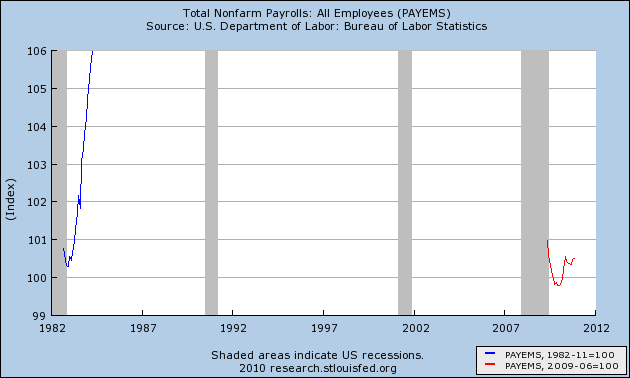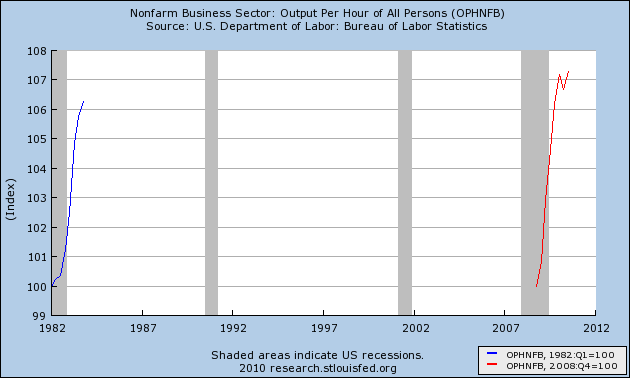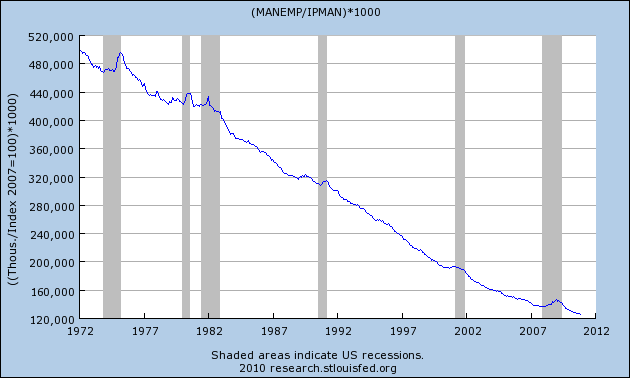A while back I wrote a diary comparing and contrasting the recovery from the 1981 recession to ours and highlighted some of the economic reasons why we were able to have such a strong recovery back then and why we lacked similar compelling reasons for a strong recovery today. Since that diary was published, our current recovery has continued (and may even be accelerating) and it now looks to be the strongest recovery since the end of the 1981 recession (except for the continued weak job creation numbers). This diary will attempt to highlight the strength of our current recovery with the recovery from the 1981 recession at a similar point removed from the trough and will again point out some of the deficiencies in job creation and growth catalysts between our recovery and the recovery from the 1981 recession. I have divided the diary into several posts, with this first one taking a look at employment.
First, let's get employment out of the way. Payroll growth has frankly stunk so far in this recovery and we can get a good look at how bad it has stunk when we compare it to the recovery from the 1982 recession (also keep this graph in mind as you read the rest of the post).
But why are we lagging, well productivity isn't helping us out this time (ie the gains in productivity are greatly offsetting demand for more labor):
And we need significantly fewer jobs per retail dollar (not a direct comparison with the 80's, but the trend is very evident):
Plus, our productivity gains in manufacturing show that it takes far fewer jobs per point of industrial production that it did back in the 80s (although the trend there was down as well):
In other words, we simply need less labor input for a greater level of production than we have in the past and this productivity growth is increasing at a rate that is greater than the growth rate in demand required to actually create new jobs (or at least at a rate that is not fast enough to absorb the losses from the recent recession at a pace that is desirous). The question we must ask is at what point do these productivity gains slow down enough to allow for significant job creation or have we reached a point where the productivity gains will continue to grow at a point that retards job growth a limits our ability to have a robust jobs recovery.



